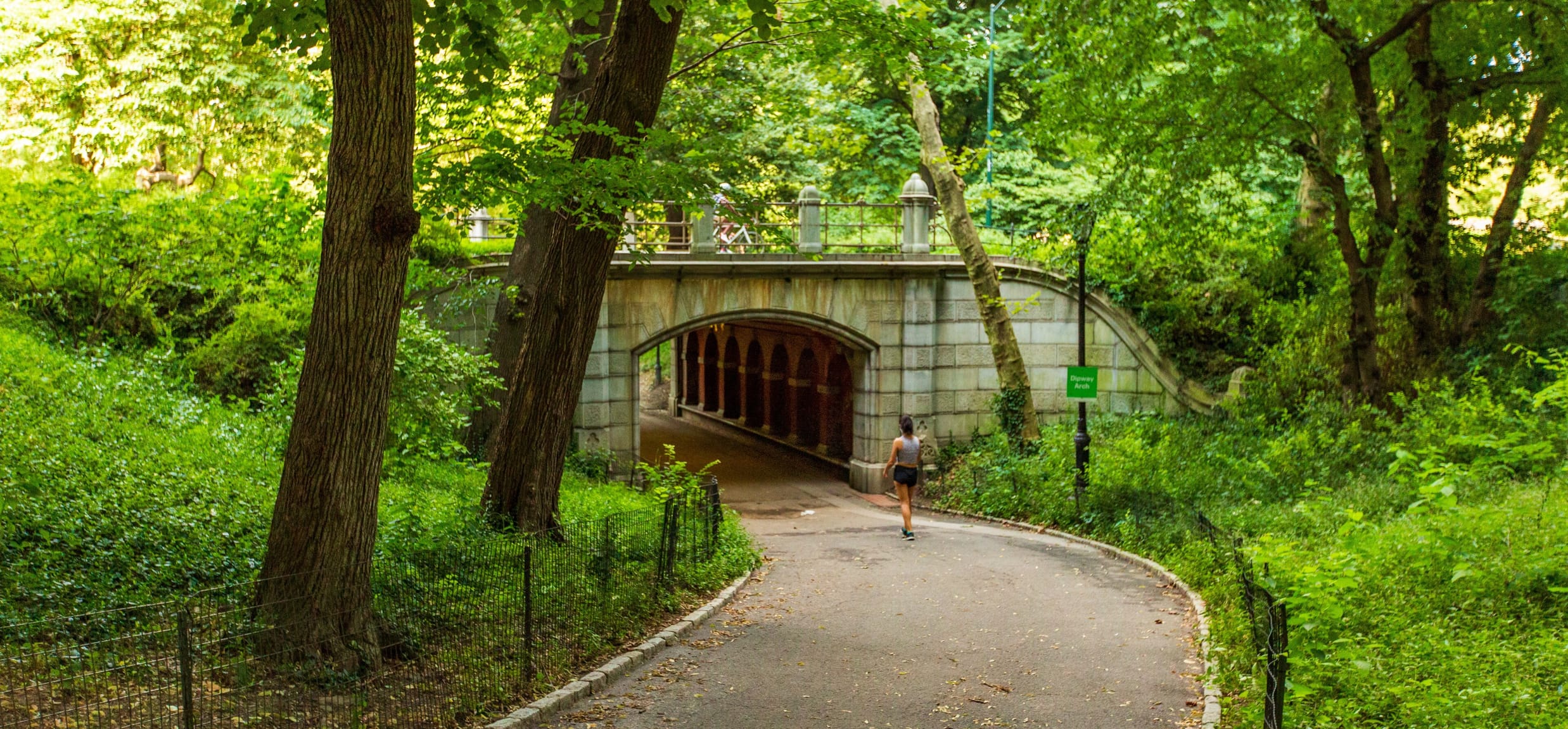Dipway Arch

Dipway Arch is one of several stone and brick arches in the south end of Central Park, designed to carry the busy carriage drives over paths and connect various features and landscapes in this densely packed area.
This arch provides a dramatic entrance into the Park from Seventh Avenue and Central Park South, allowing visitors to “dip” below the drive and travel toward Heckscher Playground and Ballfields. The archway is relatively short and narrow compared with some other arches in the area, with large, curving stone buttresses nestled into the landscape. Other distinctive details include the cast-iron railing along the drive.
Central Park’s arches and bridges are an integral part of its circulation system. The Park’s designers, Frederick Law Olmsted and Calvert Vaux, created an intricate system of pedestrian paths, a bridle path, and carriage drives to allow visitors to experience the Park’s landscapes in a variety of ways. However, for this system to work safely and in a relatively small space, it had to limit interactions between potentially conflicting forms of traffic. The Park’s arches and bridges separate this traffic by carrying one form of transportation over another.
Between 1859 and 1866, 27 arches and bridges were built in Central Park. All were designed by Vaux—in some cases with the assistance of fellow architect Jacob Wrey Mould. Each one is unique, designed with various materials and decorative motifs and with careful consideration of its placement in the landscape. Over time, six arches and bridges were added and three were removed, bringing the total to 30 ornamental bridges and arches in the Park today. There are also additional bridges in the Park’s woodlands that are smaller, constructed with wood, and typically cross over streams.
Another key part of this circulation system are the transverse roads that allow City traffic to cross the Park. The transverse roads are sunken below the grade of the Park with bridges crossing over them. These bridges were designed as more utilitarian structures and weren’t intended to be seen—but they allow pedestrians and other traffic to seamlessly move through the Park. There are 13 transverse road bridges (one of which, Denesmouth, is also considered an ornamental bridge).

Give Back to the Park
Arches and bridges support every visitor’s journey through Central Park. You can help the Central Park Conservancy maintain these integral structures and the landscapes that surround them.